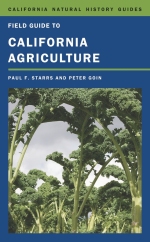Advice on writing a clear scientific paper, from Virgina Dale
/Advice on writing a clear scientific paper from Virgina Dale, Editor-in-Chief of the journal, Environmental Management since 2001. She says:
- Scientific papers are not mystery novels. It is important to present the key results in the abstract of the manuscript and to have the introduction of the paper make clear both the impetus for the study and what is be presented in the manuscript.
- Authors need to give the greatest attention to the parts of paper most likely to be read. Most people do not read a scientific paper from beginning to end but rather first focus on the title, then the abstract, and next the figures and tables. If the information presented is of interest, then the conclusion will be perused. Only those studies that have particular pertinence to the reader will be read in their entirety.
- Organization of the material is critical. Almost all scientific papers should follow the standard format: introduction, methods, results, discussion, and conclusion.
- Authors should check that the methods are complete and that most figures and tables are presented in the results section.
- Each paragraph should start with a strong topic sentence, which presents the main idea and hence is an overview of what is to come. The concluding sentence should summarize the paragraph and provide a logical flow to the next one.
Dale, V. H. 2014. Environmental Management: Past and Future Communications. Environmental Management 54:1–2
